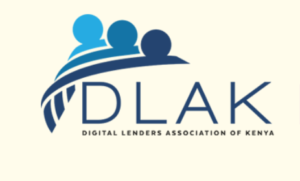The Credit Reference Bureaus (CRBs) in Kenya have proposed a vetting tool intended for digital lenders before their plan to return to sharing data on customer loans is implemented.

The Credit Reference Bureaus (CRBs) made it known that their lobby, the Credit Information Sharing (CIS) and the Financial Sector Deepening (FSD) which is an independent trust with a focus on creating a financial system that is inclusive had presented a criterion for screening all digital lenders before granting them admission or permission to share any information on loan defaults and loan payments. The presentation was made to the Central Bank of Kenya (CBK).
A report by the Financial Sector Deepening (FSD) made it known that, “Approval has been sought through submissions by CIS Kenya to CBK on behalf of the industry. It is anticipated that CBK shall give its approval to allow for a full roll-out of the Onboarding Procedures.”
The Central Bank of Kenya (CBK) had earlier on in 2020 locked out or stopped 624 credit only providers and digital lenders from carrying out any sharing of information with regards to loan defaults and loan payments after numerous complaints by users regarding the misuse of the Credit Information Sharing (CIS) mechanism. The Central Bank of Kenya (CBK) also stopped all credit only micro finance establishments from sharing any data they had in borrowers.
All Credit Reference Bureaus (CRBs) in Kenya are allowed to contact third (3rd) parties which include digital lenders, for information regarding loan defaults and loan payments. Said information will then be shared to micro finance institutions, banks, and Savings and Credit Co-Operative Societies (SACCOs).
The Credit Reference Bureaus (CRBs) stated that the criterion for vetting has so far been proven to be effective with only five (5) of the sixteen (16) digital lenders being able to pass the test.
The new vetting tool has also been tested on a total of nine (9) micro finance institutions that have not been regulated, sixteen (16) leading companies, four (4) Savings and Credit Co-Operative Societies (SACCOs), and two (2) trade creditors.

A number of the digital lenders who participated in the new Financial Sector Deepening (FSD) vetting tool and failed could not pass the test as a result of the fact that they were not able to address the concerns of customers in person, did not disclose their terms and conditions, and did not have any physical location.
The digital lenders affected were also not able to pass the new Financial Sector Deepening (FSD) vetting tool due to the fact that they only intended to use the Credit Reference Bureaus (CRBs)’ mechanism as a leverage for loan recovery by threatening to list their clients and while they had collected their date electronically, their data submissions still had a number of errors that required various corrections which resulted in the low rates of completion.
The new vetting model being proposed by the Credit Reference Bureaus (CRBs) is suggesting a checklist that will comprise of a questionnaire that will capture information with regards to the operational capacity, staffing capacity, legal capacity, and technical capacity of the Credit Provider.
Once the checklist stage has been completed, the Credit Provider is then taken through the data submission template. Once there, their data capture process is the reviewed in order to properly assess their compliance level.
Digital lenders in Kenya have numerous times been accused of abusing the personal data of defaulters and bombarding their friends and relatives with messages regarding the loan defaults and even going as far as asking third parties to enforce and ensure repayment.
According to research by Digital Credit, Financial Literacy, and Household Indebtedness the decision by the digital lenders is due in part to the reality that digital borrowers are two times more likely to default on loans than borrowers who access loans via conventional means. This is because of the fact that digital borrowers take loans from multiple sources and use the funds received, for consumption.
The short periods for repayments coupled with the low value loans have led to higher rates of loan defaults and negative Credit Reference Bureaus (CRBs) listings. In Kenya digital borrowers made up 90 percent of the total black listed individuals on Credit Reference Bureaus (CRBs) listings. This was of course until the regulator stepped in.

The barring of digital lenders in Kenya from Credit Reference Bureaus (CRBs) listings resulted in a major 50 percent decline in the number of loans issued through mobile phones. The Digital Lenders Association of Kenya (DLAK) revealed that the value of loans given each month, dropped by as much as an estimated 2 billion Kenyan Shillings.
The Kenyan Government has in a move aimed at curtailing all rogue players, proposed a new law which will require all digital lenders in Kenya to be licensed by the Central Bank of Kenya (CBK).
One major aim of the Central Bank of Kenya (CBK)’s (Amendment) Bill 2021 which is backed by the Kenyan Government and has already been brought before the Kenyan Parliament, is the stopping of the really high digital lending rates that have led to very many borrowers getting into major debt.
It is also looking to flush out any and all rogue players at a time when many complaints have been made regarding the shaming of borrowers who default, the illegal mining of the private data of users, as well as money laundering.
The banking regulator which is the Central Bank of Kenya (CBK) will be expected to figure out the capital adequacy requirements and minimum liquidity requirements for all digital credits providers in Kenya in a way that will be similar to the conditions that have been put in place for operating a Bank in the country.
How informative was this article? Are there any other news topics, categories, or How To topics, that you would like us to write on? Feel free to reach out to Mpesa Pay in the comment section.


